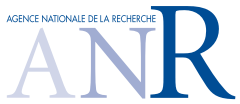Higher Structures
Structures supérieures
21 – 25 January 2019
|
Scientific Committee
Comité scientifique Julie Bergner (University of Virginia) Organizing Committee
Comité d’organisation Joan Bellier-Millès (Université de Toulouse) |
|
Algebra. The theory of categories has proven to be a valuable algebraic tool to state and to organise the results in many areas in mathematics. In the same way, the notion of an operad, which emerged from the study of iterated loop spaces in the early 1970’s, now plays a structural role by organising the many operations with several inputs acting on the various objects in algebra, geometry, topology and mathematical physics.
Homotopical algebra. At the end of the last century, it appeared clearly that the introduction of higher algebraic notions was necessary in order to encode higher structures naturally appearing in mathematical problems. Homotopy theory provides us with natural phenomena whose description requires higher maps, that is some notion of higher category. In the same way, the algebraic notion of an operad, while already used to describe homotopy algebras, was proved to be a too strict notion, e.g. for the purposes of deformation theory. Higher structures. After a long period of research in algebra and topology, the theory of higher structures gave rise recently to radically new and manageable notions, like the homotopy algebras, infinity-categories, and infinity-operads. They allowed renowned mathematicians to prove long -standing conjectures like the deformation quantisation of Poisson manifolds (Kontsevich) and the fundamental principle of deformation theory (Lurie, Pridham). They also made it possible to develop new domains like derived algebraic geometry (Toen–Vezzosi, Lurie), factorisation algebras (Costello, Gwilliam) and factorisation homology (Ayala, Francis, Tanaka). Conference. We live nowadays a very exciting period of rapid mathematical development of higher structures. The aim of this conference is to cover the new foundational studies of higher algebra together with its applications to prove some puzzling conjectures and develop some long-term programs. |
Algèbre. La théorie des catégories a montré qu’elle était un outil algébrique efficace pour formuler et pour organiser les résultats dans de nombreux domaines des mathématiques. De la même manière, la notion d’opérade, qui a émergé de l’étude des espaces de lacets itérés au début des années 70, joue maintenant un rôle structural important dans l’organisation des multiples opérations à plusieurs entrées mais une seule sortie qui agissent sur les divers objets en algèbre, géométrie, topologie et physique mathématique.
Algèbre homotopique. A la fin du siècle dernier, il est apparu clairement qu’il fallait introduire des notions algébriques supérieures pour pouvoir coder les structures supérieures apparaissant dans les problèmes mathématiques. Par exemple, la théorie de l’homotopie nous fournit des phénomènes naturels dont la description requiert des applications supérieures, c’est-à-dire une certaine notion de catégorie supérieure. De manière similaire, la notion algébrique d’opérade, déjà utilisée pour décrire les algèbres à homotopie près, s’est montrée être une notion trop stricte, par exemple dans le domaine de la théorie de la déformation. Structures supérieures. Après une longue période de recherche en algèbre et en topologie, la théorie des structures supérieures a récemment donné naissance à des notions radicalement nouvelles et maniables, comme les algèbres à homotopie près, les infini-catégories et les infini-opérades. Ces dernières ont permis de résoudre des conjectures ouvertes comme la quantification par déformation des variétés de Poisson (Kontsevich) ou le principe fondamental de la théorie de la déformation (Lurie), par exemple. Elles ont aussi rendu possible le développement de nouveau domaine comme la géométrie algébriques dérivée (Toen–Vezzosi, Lurie), les algèbres à factorisation (Costello–Gwilliam) et l’homologie de factorisation (Ayala–Francis–Tanaka). Conférence. Nous vivons aujourd’hui une période excitante de développement rapide des structures supérieures. Le but de cette conférence est de couvrir les nouveaux travaux fondamentaux en algèbre supérieure ainsi que ses applications pour démontrer des conjectures intrigantes et pour développer des programmes à long terme. Cette conférence sera l’événement qui conclura le projet ANR « Structures supérieures en Algèbre et Topologie » : |
Anton Alekseev (Université de Genève) The Goldman-Turaev Lie bialgebra and the Kashiwara-Vergne problem
Dimitri Ara (Aix-Marseille Université) A Quillen Theorem B for strict ∞-categories
Julie Bergner (University of Virginia) 2-Segal spaces and algebraic K-theory
Vladimir Dotsenko (Trinity College Dublin) Monads and PBW theorems
Geoffroy Horel (Université Paris 13) Galois group and space of knots
Donatella Iacono (University of Bari Aldo Moro) DG-Lie algebras and deformation of pairs
Najib Idrissi (ETH Zurich) Configuration spaces and operads (slides)
Ieke Moerdijk (Utrecht University) Dendroidal spaces and mapping spaces between little cubes operads
Emily Riehl (Johns Hopkins University) The complicial sets model of higher ∞-categories (slides)
Marco Robalo (IMJ-PRG Paris)
Marcy Robertson (University of Melbourne) Tangles, modular operads, and a group like GT
Pavel Safronov (University of Zurich) Noncommutative Poisson geometry and the Kashiwara—Vergne problem
Claudia Scheimbauer (University of Oxford) A complete model for the cobordism category
Sarah Scherotzke (University of Munster) The Chern character and categorification
Nathalie Wahl (University of Copenhagen) Products, coproducts, and « higher structures » in string topology
Thomas Willwacher (ETH Zurich) Deformation quantization and the homology of knot spaces





